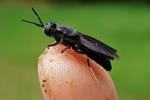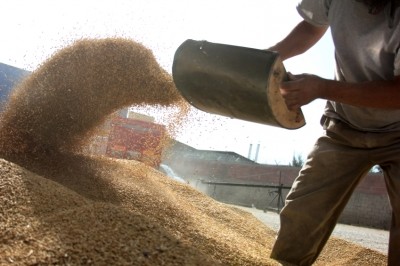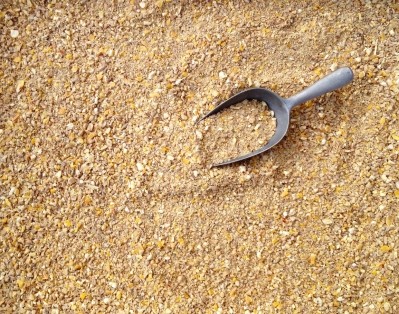Enterra gets Canadian regulatory backing for insect larvae in chicken feed

“We can now offer a renewable protein alternative to those companies manufacturing and retailing chicken feed," said Victoria Leung, marketing and operations manager for Enterra.
The approval from the Canadian Food Inspection Agency (CFIA) comes after four years of work, said the Vancouver based insect protein producer.
The CFIA evaluated its dossier in terms of a novel feed ingredient; the assessment included a review of product safety for livestock, workers, food and the environment, along with data analysis.
In the US, the Ingredients Definition Committee of the Association of American Feed Control Officials (AAFCO) accepted Enterra’s application to use dried BSF larvae in salmonid feed earlier this year.
The definition was reviewed and agreed to by the US Food and Drug Administration (FDA), the first time a federal regulatory body in North America accepted the use of an insect based ingredient as a source of energy and protein for use in animal feed.
Antoine Hubert, president of the International Platform of Insects for Food and Feed (IPIFF), welcomed the regulatory development: “It is a significant step forward for the development of our industry,” he told us.
Enterra said it is working with the CFIA and FDA for approval for the use of whole BSF larvae in other feeds as well, including poultry layers, trout and salmon, and is also developing a meal with 60% protein content and oil derived from the BSF larvae.
Feeding insects
Enterra rears BSF larvae on pre-consumer food waste such as fruits, vegetables, stale bread, grains, and retail store waste that it said would otherwise go to landfill, composting or waste-to-energy operations where the food nutrient value would be lost.
Dried BSF Larvae are comprised of 40% protein and 40% fat on a dry matter basis (dmb), with an ideal inclusion level in finished feed of 15-30%, said the producer, which has its processing facility in Langley.
The larvae are a source of essential amino acids, and compare favorably to animal-derived ingredients such as poultry by-product meal and fishmeal, it added.
The fat fraction of the larvae is said to consist of highly metabolizable fats, including 55% saturated fat, 30% monounsaturated fatty acids, 15% polyunsaturated fatty acids (Omega 3, 6 and 9) <1% free fatty acid.
Relative to other feeder insects, the company said dried BSF larvae are a good source of high availability macro-minerals, including digestible calcium. They also have a moisture content of less than 10%, water activity of 0.5 and a shelf life of at least 12 months.
And to ensure the dried BSF larvae adhere to high quality and safety standards specified in CFIA, FDA, and EU regulatory regimes, Enterra said its production lots are routinely analyzed for heavy metals, mycotoxins, PCBs, dioxins, E. coli, Salmonella and total microbial load.
Joint venture in Switzerland
Last June saw the Canadian company form a joint venture with Swiss insect protein producer, Entomeal.
The plan was to leverage that company’s local expertise to set up a commercial scale insect-rearing facility in Europe using black soldier fly larvae.
The construction of that plant, located in Kerzers in the canton of Freiburg, is said to be underway. It will use primarily waste vegetables and fruits from local farming and food processing activities.
The partnership plans to produce a meal product, which has been approved for use in Switzerland as an ingredient for aquaculture; a concentrated oil product also used as a feed ingredient in aquaculture, poultry farming, and animal feed preparations; and an organic fertilizer product.
EU regulatory developments
Meanwhile, industry sources told us they expect more visibility in September on the process related to the approval of insect meal use in fish feed in Europe.
Insect protein, together with other non-ruminant proteins such as poultry derived sources, seemed to have been given the green light for use in aquaculture in the EU in June 2013.
However, the condition for using non-ruminant proteins for feeding non-ruminant farmed animals, as per Annex IV to Regulation (EC) No 999/2001, is the killing of the animals in an official registered slaughterhouse.
For insects it is technically difficult to comply with this condition, thus preventing their use in fish farming.
The industry insider said he expects the EU Commission’s Directorate General for health and consumer safety, DG Santé, to publish a draft amendment in September lifting the slaughterhouse amendment blocking the use of non-ruminant insect protein in aquaculture.
















